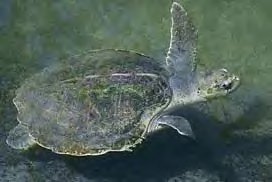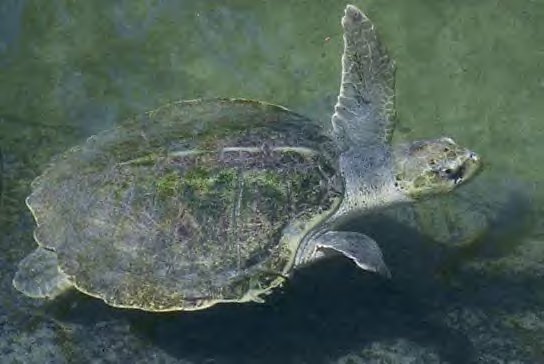Turtles
Description
23 1/2-29 1/2" (60-74.9 cm). Ocean-dwelling, with paddlelike limbs. Carapace wide and heart-shaped, keeled, gray, 5 costal scutes, 1st touching nuchal; 4 scutes with pores on bridge. Plastron white. Two pairs of prefrontal scales between eyes. Young have 3 ridges on carapace, 4 on plastron. Males have tails extending well beyond margin of shell.
Endangered Status
The Atlantic Ridley is on the U.S. Endangered Species List. It is classified as endangered in Alabama, Connecticut, Delaware, Florida, Georgia, Louisiana, Massachusetts, Maryland, Mississippi, North Carolina, New Jersey, New York, Rhode Island, South Carolina, Texas, and Virginia. This species has been brought close to extinction as a consequence of egg robbing, the slaughter of nesting females for food, and drownings in shrimp boat nets. The Mexican and U.S. governments began last-ditch efforts in the 1970s to save the species, whose major nesting beaches are along Mexico's Gulf coast. There are estimated, based on counts at nesting sites, to be about 1,000 breeding females today. New devices on shrimp trawlers allow sea turtles to escape when caught in the nets.
Breeding
Nests April to July, during the day, along short stretch of the Tamaulipas beach in Gulf of Mexico. Lays 2-3 clutches of about 110 spherical, 1 1/2" (38 mm) eggs.
Habitat
Prefers shallow coastal waters.
Range
Gulf of Mexico, ranging north in summer months to New England and occasionally Nova Scotia.
Discussion
In the past, an estimated 40,000 turtles would congregate off the nesting beach, while 10,000 females nested ashore.


